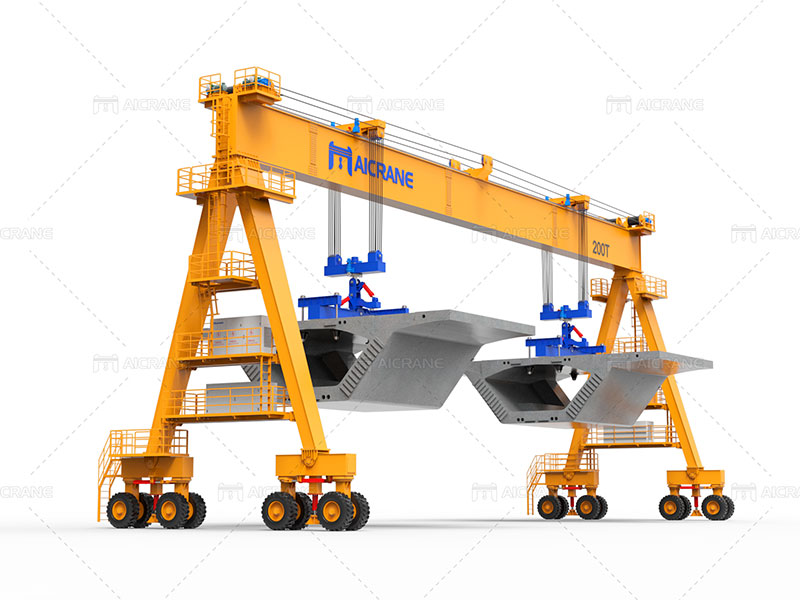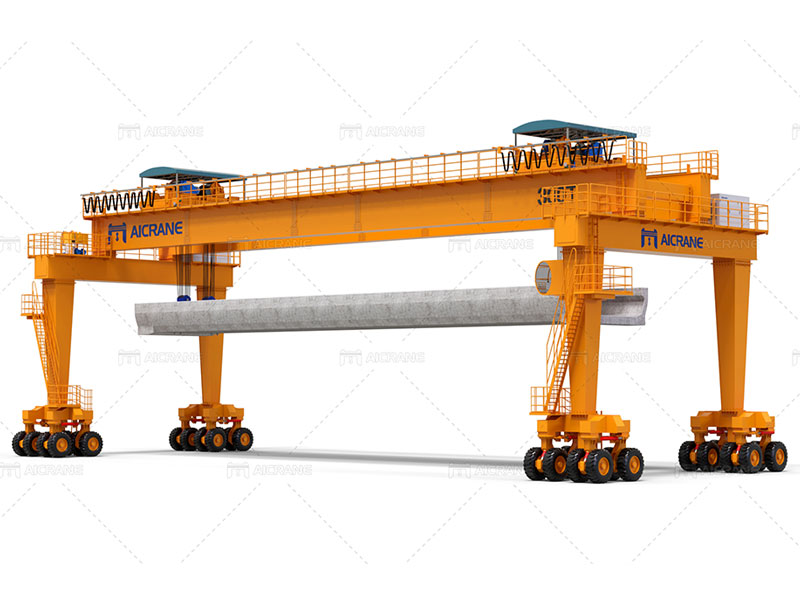Straddle carriers are versatile and powerful machines designed for efficiently transporting heavy and oversized loads in ports, terminals, and industrial yards. Operating such a complex piece of equipment requires a thorough understanding of its functions, controls, and safety protocols. This guide provides a detailed overview of how to operate a straddle carrier, ensuring safe and efficient handling of goods.

Pre-Operational Checks:
Before starting the straddle carrier, conduct a series of pre-operational checks to ensure that the machine is in optimal working condition. This includes inspecting the tires for any signs of damage or low pressure, examining the hydraulic system for leaks, and verifying that all safety features are functional. Check the engine oil, transmission fluid, and coolant levels, and top them up if necessary. The straddle carrier is usually a double girder gantry crane due to its load capacity. Make sure to check both of the girder. Also, ensure that the cabin and operator’s area are clean and free from obstructions.
Starting the Straddle Carrier:
1. Begin by entering the operator’s cabin using the designated access points. Make sure to wear all necessary personal protective equipment (PPE) such as a hard hat, safety vest, and appropriate footwear.
2. Turn the ignition key to start the engine, and allow it to idle for a few minutes to ensure proper lubrication and warm-up.
3. Engage the brakes by selecting the neutral gear and applying the parking brake. This prevents any unintended movement during startup.
4. Familiarize yourself with the controls and instrumentation in the cabin. This includes the steering wheel, throttle, brake pedals, joystick (for lifting and lowering), and any other specialized controls unique to the straddle carrier model.
Basic Operation
1. Steering:
Straddle carriers typically have multiple steering modes, including crab steering (for sideways movement) and circle steering (for tight turns). Familiarize yourself with these modes and practice their operation in an open area.
2. Acceleration and Deceleration:
Gradually apply throttle to accelerate and release it to decelerate. Use the brake pedals to slow down or bring the carrier to a complete stop.
3. Lifting and Lowering:
Use the joystick or controls designated for lifting and lowering operations to adjust the spreader height. Ensure that the spreader is positioned correctly before engaging any loads.
4. Handling Loads:
Approach the load carefully, aligning the spreader with the designated lifting points. Once in position, lower the spreader gently until it securely engages the load. Avoid sudden or jerky movements during this process.
5. Traveling with Loads:
When carrying a load, maintain a slow and steady pace. Avoid sharp turns or sudden changes in direction, as this can affect stability.
6. Unloading:
When unloading a container or other cargo, position the straddle carrier over the designated drop-off area. Slowly raise the spreader until the load is clear of the ground, and then carefully move the carrier away from the drop-off point. In this scenario, the straddle carrier can also be called container gantry crane.

Safety Considerations
1. Always wear appropriate PPE, including a hard hat, safety vest, and safety shoes, when operating a straddle carrier.
2. Keep a safe distance from other vehicles, equipment, and personnel in the operational area.
3. Avoid overloading the straddle carrier beyond its specified capacity.
4. Be mindful of the carrier’s height and width, especially when passing through low-clearance areas or narrow spaces.
5. Regularly inspect the carrier for any signs of wear, damage, or fluid leaks. Report any issues to maintenance personnel promptly.
Conclusion
Operating a straddle carrier requires a combination of technical proficiency, situational awareness, and adherence to safety protocols. By following the steps outlined in this guide, operators can confidently and safely maneuver the straddle carrier, ensuring efficient cargo handling in port and terminal environments. Remember to undergo regular training and stay updated on any new features or operational procedures introduced by the crane manufacturer.